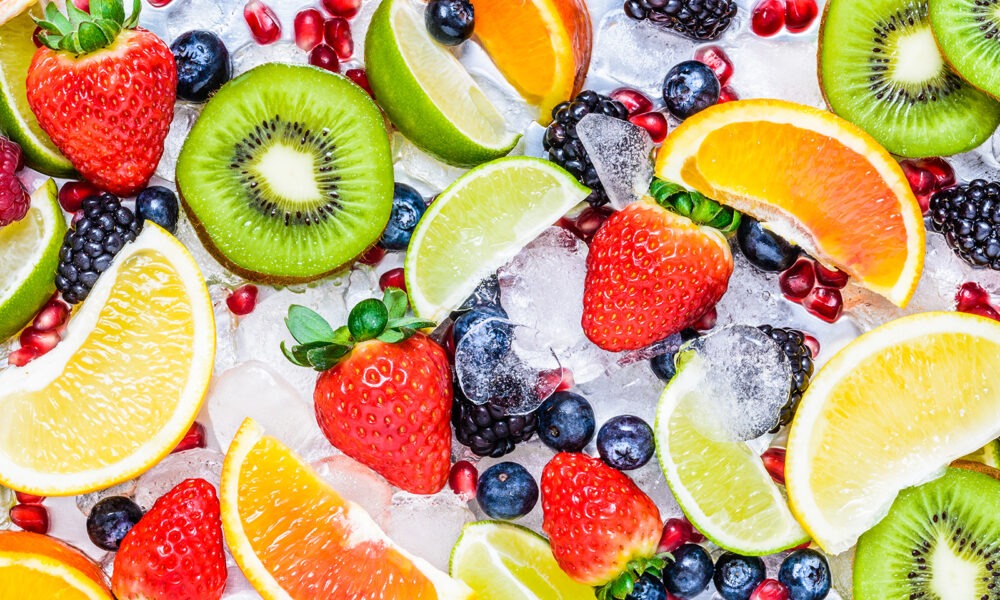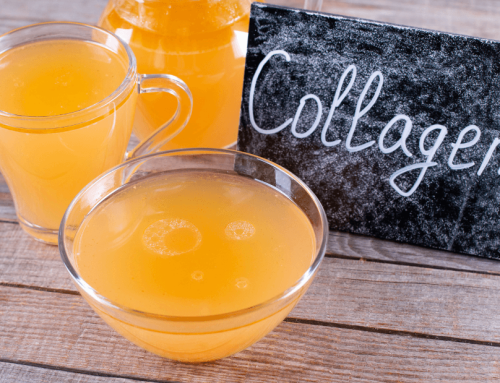SUPERFOODS – BERRIES & OTHER SUPER FRUITS
By Frances Dalton Naturopath, Herbalist, Nutritionist
Adding more salads and vegetables to your child’s diet is important for restoring or maintaining health, however there is mounting concern about the quality of our food. Soils are becoming depleted of essential minerals, the use of farming practices like factory farming, the emergence of genetic modification & the heavy use of pesticides, herbicides & antibiotics mean that good food may not be enough. (I highly recommend “The Great Food Gamble” by John Humphrys if you would like to read more on this topic) With this in mind, the inclusion of Superfoods in the diet is a wise choice. Superfoods are nutritionally more potent than regular foods. Superfoods are the most powerful nutrient-dense foods on the planet thus they are powerhouses in any healing program. Superfoods provide nutrients in the form of phytonutrients that cannot be provided with synthetic supplements alone. These phytonutrients serve to activate phase II liver detoxification, reduce lactic acid & support mitochondrial (cellular energy) function & immune function
This article gives a brief overview of another terrific group of Superfoods – Berries & Superfruits known for their antioxidant potential, followed by a few recipes to give you some ideas on ways to incorporate them into your child’s diet.
OXIDATIVE STRESS & THE IMPORTANCE OF ANTIOXIDANTS
Free radicals may sound a little like an extremist terrorist group evading capture and wreaking havoc across the globe & in fact within the context of your body you would be right. They occur naturally through normal metabolism however an extra and unnecessary free radical load can be put on our bodies by external factors including pollution, cigarette smoke, radiation, heavy metals, burnt & deep fried foods & by internal factors like inflammation. The body works to combat this oxidative stress with antioxidants like the enzymes superoxide dismutase (SOD), Glutathione (GSH) & catalase to name a few as well as other antioxidant molecules like Vitamins A, C & E, transferrin, ceruloplasmin & carotenoids. There is mounting evidence that children with Autism & allergies have high levels of oxidative stress – lots of free radicals with inadequate antioxidant capacity. Additionally, antioxidant support is imperative during any detoxification program which is part of the treatment program for most of these children. Detoxification requires liver & antioxidant support. Interestingly “Many of the enzymes in the methylation cycle are down-regulated in response to oxidative stress, so if it’s high it could be one cause of methylation issues in autistic children” (Jepson).
The best way to improve your child’s antioxidant capacity & combat the free radicals in the system is to increase intake of foods with high antioxidant properties. When antioxidants react with free radicals their destructive properties are eliminated. Antioxidants are naturally occurring chemicals in foods. They include vitamins A, C and E, carotenoids such as beta-carotene, some minerals, phenolic compounds and other naturally occurring chemicals found in fruit, vegetable & nuts. Superfoods are not only nutrient dense but have very high antioxidant properties with Berries being star performers in this category.
BERRIES & OTHER SUPERFRUITS
All Berries including strawberry, blueberry, raspberry, cloudberry, blackberry & blackcurrant are very high in antioxidants. For example, one strawberry is higher in Vitamin C than one orange. Berries contain many phytonutrients that boost the immune system. Best of all, berries have a low glycaemic index (GI) which means they create sustained slow releasing energy as opposed to creating a spike in your blood sugar levels. Being low in sugars means they are less likely than some fruits to cause issues in those dealing with yeast and bacterial overgrowth.
Goji Berries – Goji berries also known as wolfberries, are grown on vines in the protected valleys of Inner Mongolia and Tibet. The distinctively flavoured red berries are a very rich source of Vitamin C, having 500 times more Vitamin C per ounce than oranges. They are a superb source of Vitamins A, B1, B2, B6 and E and contain a full complement of protein with 18 amino acids including the 8 essential amino acids and 21 trace minerals including zinc, calcium, iron, selenium, phosphorus & germanium. Most of all they are an excellent antioxidant, containing more beta-carotene than carrots, making them an ideal natural whole food for reversing aging and protecting against disease.
Acai Berries
Açai (pronounced “ah-sigh-ee”) is a natural & powerful antioxidant. Acai berries come from a type of palm tree that grows in tropical & central South America & have long been a main staple in the diet of tribes within the Amazon. The Acai berry boasts a complete complement of nutrients. For centuries the people of the Amazon have revered the Acai berry for its unique nutritional properties. Their tribal healers used Acai to promote health & longevity & their warriors consumed it as a source of strength, energy & vitality. Recently the remarkable health benefits of Acai have been validated by modern science. The high content of anthocyanin’s in Acai gives the berry it’s dark & vibrant colour & is the main reason for its antioxidant activity. Based on USDA data, freeze dried acai has a higher antioxidant activity on a gram for gram basis than any other known fruit or vegetable with six times the antioxidant capacity as blueberries & approximately 30 times the anthocyanins in red wine.
Acai berries are also full of amino acids & essential fatty acids. Acai also contains phytosterols which reduce blood plasma cholesterol. Acai has high levels of calcium, vitamin E, phosphorus, iron & fibre.
Acai contains:
– Essential Fatty Acids (Omegas 6 & 9)
– Vitamins A, B1, B2, C, E & flavonoids
– Minerals (Potassium, Iron, Phosphorus, Calcium)
– Phytosterols (cholesterol busting)
– 19 Amino Acids (proteins)
– Fibre (30+%)
– Trace elements (chromium, cobalt, molybdenum) Polyphenols (free radical scavenging)
In addition to its nutritional properties, Acai has antibacterial & anti-inflammatory properties. In scientific tests Acai has been shown to stimulate the activity of macrophages. Macrophages are white blood cells that are an important part of the body’s immune system – they actually swallow & destroy foreign objects & pathogens. Acai extract was found to inhibit the inflammatory action of certain types of bacteria in the body & the more Acai that was used the greater the effect.
Freeze dried Acai berry powder can be added to smoothies & deserts. Be sure to buy from a reputable supplier.
MANGOSTEEN
Mangosteen is a tropical evergreen tree with deep reddish purple fruit which is sweet with a hint of citrus & peach flavours & a creamy texture. A number of laboratory & animal studies show that mangosteen has significant anti-inflammatory effects & is high in Vitamin C & beta-carotene. Mangosteen also contains xanthione extracts (garcinol & mangostin) which are anti-inflammatory agents with preliminary evidence for inhibiting carcinogens. Mangosteen also has antioxidant, antibacterial & antifungal properties.
POMEGRANATE
Pomegranate is classed as a berry & has been used as a food for many thousands of years & is popular is the Middle East & Turkey. It is a red fruit which is full of seeds covered in the flesh of the fruit. There are approximately 600 seeds in each pomegranate. Pomegranate is rich in Vitamin C, B5, potassium & antioxidant polyphenols.
AUSTRALIAN NATIVE ANTIOXIDANTS
Australian Indigenous fruits are currently causing a lot of interest worldwide due to their dense antioxidant capacity & potentially bioactive phytochemicals. Below is a brief summary of three of these Australian Native Superfoods.
KAKADU PLUM
Kakadu plum is a native Australian superfruit that is not actually a plum but more closely related to almonds. Kakadu plum is the world’s highest fruit source of Vitamin C. Additionally, research by the CSIRO shows it has other nutritionally important polyphenolic antioxidant compounds. Two of the phytochemicals in Kakadu plums are gallic & ellagic acids, both have excellent antioxidant properties.
Gallic acid has antibacterial, anti-viral activity & also shows anti-inflammatory, anti-tumour, anti-mutagenic & anti-bronchodilatory activities. Ellagic acid also has anti-cancer effects against a wide range of damaging compounds. Kakadu plum is available as a freeze dried powder that can be added to smoothies etc.
WILD ROSELLA
Wild Rosella is the modified leaf or calyce of the native hibiscus plant. These fruits are a deep rich red with a slightly tart citrus like taste. Wild Rosella contain appreciable levels of anthocyanins & antioxidant activity.
ILLAWARRA PLUM
Another Australian native superfood. Illawarra Plums contain high levels of mucopolysaccharides which are hugely beneficial for the gastrointestinal tract health. Deep crimson colour indicates high anthocyanins & Illawarra plums have an antioxidant activity up to 7 times that of blueberries.
RECIPES
Berries & fruits are easy to add to smoothies, deserts or sauces but here are a few simple delicious recipes to get you started.
GFCF Berry Ice Cream with Raw Chocolate Sauce
Serves 4
3 frozen bananas
1 1/2 cups of frozen mixed berries
1 vanilla pod or 2 teaspoons vanilla extract
2 tablespoons raw honey
Sauce
1 cup hazelnuts
2 tablespoons raw cacao powder
1 tsp Acai powder
1 tablespoon agave or 1/4 teaspoon stevia to sweeten
2 tablespoons of tahini (sesame seed paste)
Pinch sea salt
2 tablespoons extra virgin coconut oil
1/2 cup of warm water
1/2 cup ice
Method:
1. Blend the bananas, mixed berries, honey and vanilla in a high speed blender.
2. For the sauce, mix all ingredients except for the ice in a high speed blender. Add the ice only when a creamy consistency is formed.
3. Serve the ice cream in bowls and pour sauce over the top.
Chia Power Porridge
1/2 cup Chia seeds
2 cups Nut milk or water
1 tbsp Goji berries
1 tbsp Sultanas
1 tbsp Pumpkin seeds (soaked 4 hours)
1/4 cup Water
1 tbsp Cinnamon powder
Pinch Himalayan salt
Place all ingredients into a saucepan & stir over low heat for 10 mins. Place in serving bowl & Top with fresh grated apple or pear.
Goji Chocolate fudge
1/2 cup cacao cocoa butter
1/2 cup raw cashew butter or ground up cashews
1/2 cup goji berries ground up
1/2 cup agave nectar or sweetener of choice
1/2 cup goji berries soaked overnight
Zest from 1 orange.
Place all ingredients into a food processor except zest & soaked goji berries. Place mixture into a pretty bowl & mix in the soaked goji berries & orange zest. Chill in the fridge to set. Garnish with orange zest, cacao nibs or nuts. Cut in small squares as this fudge is very rich.
Blueberry Smoothie
2 cups wild blueberries (these are smaller & tarter than standard blueberries & have a red centre)
2 bananas 2 tbsp coconut oil
1/4 cup shredded coconut.
Blend & serve.
Blueberry bliss
2 handfuls of fresh baby spinach
1 banana
1 or 2 cups of fresh blueberries.
Blend & serve (add water if too thick)
Raspberry bliss
1 cup raspberries
1 banana
1 tbsp raw cacao powder
1 tsp Acai powder
2 cups almond milk
Ice
agave syrup or sweetener of choice to taste.
Blend & Serve.
MANGOSTEEN PASSION
2 cups almond milk
1 tsp Raw mangosteen powder
1 tsp acai powder
2 tbsp raw cacao powder
Cacao nibs
Pinch of Himalayan pink salt.
Blend & serve.
BLACKCURRANT & STRAWBERRY ICE BLOCKS (FOR SORE THROATS)
These delicious iceblocks are rich in vitamin C to boost the immune function & help soothe a the mucus membranes in the throat.
1 cup blackcurrants
1 cup strawberries
1 cup apple juice (freshly juiced is best – store bought juices are pasteurised which means many enzymes & heat sensitive vitamins are lost)
Blend until smooth & pour into iceblock moulds. Freeze.






